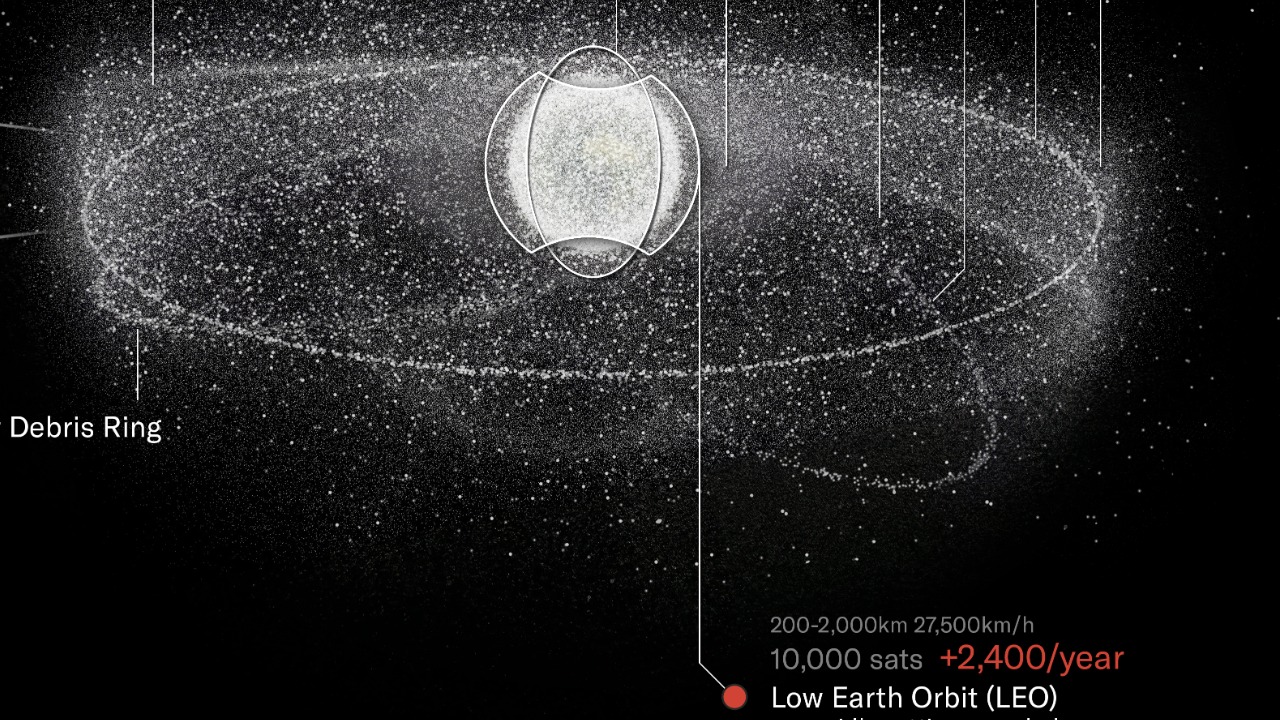
An interactive map has recently highlighted the alarming increase in out-of-control rockets and spacecraft crashing back to Earth. This surge in uncontrolled reentries poses significant risks to populated areas, with scientists warning of a 10% chance that falling debris could result in fatalities within the next decade. The urgent need for updated guidelines is underscored as current regulations fail to keep pace with the growing problem of space junk reentering our atmosphere.
The Surge in Uncontrolled Spacecraft Reentries
The frequency of uncontrolled spacecraft reentries has been on the rise, as evidenced by data visualized in a new interactive map. This tool reveals a troubling pattern of out-of-control rockets and defunct satellites descending back to Earth without precise mitigation strategies. In recent years, there have been numerous instances where failed missions have resulted in debris scattering across various regions. For example, the uncontrolled reentry of China’s Long March 5B rocket in 2020 and 2021 highlighted the potential dangers, as debris landed near populated areas, raising concerns about safety and environmental impact. These incidents are not isolated, and the environmental and infrastructural impacts of such reentries are significant. Debris from these uncontrolled descents can cause damage to land, water, and aviation routes. The potential for harm to human life and property is substantial, as debris can strike anywhere along its unpredictable path. The increasing frequency of these events underscores the need for more robust measures to prevent and manage space debris.
Visualizing the Threat Through Interactive Tools
The interactive map provides a stark visualization of the threat posed by uncontrolled reentries, allowing users to track the locations and timelines of these incidents. By integrating data from global space agencies, the map illustrates the scale of reentries and highlights hotspots where debris has fallen near human settlements. This tool serves as a powerful reminder of the hidden dangers lurking above us, as it brings the issue of space debris into sharp focus. User engagement with the map is crucial for raising public awareness about these risks. The tool allows users to filter data by date or type of object, offering a comprehensive view of the threat landscape. By making this information accessible, the map encourages individuals and policymakers to consider the implications of space debris and the urgent need for action. The visualization not only educates but also empowers users to advocate for stronger regulations and preventive measures.
Scientific Warnings on Fatality Risks
Scientists have issued stark warnings about the potential fatality risks associated with falling debris, estimating a 10% chance that someone could be killed by space debris in the next decade. This alarming statistic is based on probabilistic models that consider reentry trajectories and population density in debris paths. The unpredictability of uncontrolled objects further complicates efforts to mitigate these risks, as it is challenging to predict where debris will land. The methodology behind the 10% figure involves analyzing various factors, including the increasing number of objects in orbit and the likelihood of collisions. As space traffic continues to grow, the probability of debris falling in populated areas rises, amplifying the potential for fatalities. Experts are calling for immediate action to address these concerns, emphasizing the need for international cooperation and updated regulations to manage the growing threat of space debris.
Gaps in Current Space Debris Regulations
Current international regulations have not kept pace with the rising incidents of uncontrolled spacecraft reentries. The 1967 Outer Space Treaty, which forms the basis of space law, is outdated and lacks enforceable standards for deorbiting defunct objects. Despite efforts by organizations such as the United Nations Committee on the Peaceful Uses of Outer Space to propose updates, there is still a significant regulatory gap that needs to be addressed. Proposals for reform include mandatory end-of-life disposal plans for spacecraft and the establishment of liability frameworks to hold parties accountable for debris-related damages. These measures would help mitigate the risks associated with uncontrolled reentries and ensure that space-faring nations take responsibility for their actions. The recent data on reentries highlights the urgent need for these reforms, as the current regulatory framework is insufficient to address the challenges posed by space debris. In conclusion, the increasing frequency of uncontrolled spacecraft reentries poses significant risks to human life and infrastructure. The interactive map serves as a powerful tool for visualizing these threats and raising public awareness. As scientists warn of the potential for fatalities, it is clear that current regulations are inadequate to address the growing problem of space debris. Urgent action is needed to update international guidelines and implement effective measures to manage the risks associated with space debris reentering our atmosphere.